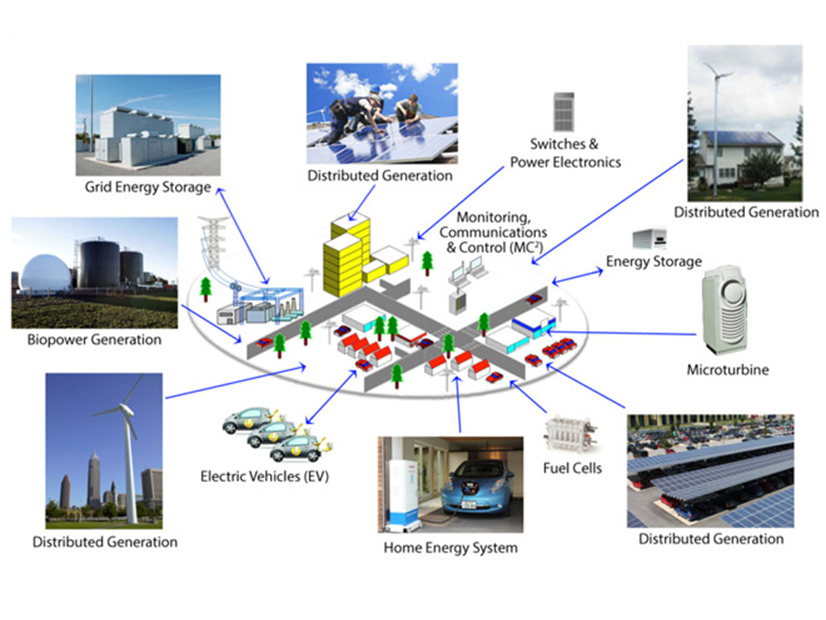NYISO stakeholders on Friday responded negatively to the ISO’s proposal for a 10-kW minimum capability requirement for individual distributed energy resources to qualify for participation in an aggregation.
Although most proposals discussed at the Installed Capacity Working Group (ICAPWG) meeting did not elicit reactions from stakeholders, NYISO’s 10-kW DER minimum requirement proposal generated significant pushback.
The ISO argued that the proposal would help DER market implementation, save staff time reviewing aggregations for interconnection and enable it to fully integrate new software and internal procedures to comply with FERC Order 2222. (See NYISO Proposes 10-kW Min. Capability Req for DERs in Aggregations)
Stakeholders, however, took exception to the ISO’s language that they would “explore” lowering the minimum capability requirements later after getting experience and a better understanding of DER penetration versus directly promising to lower the minimum capability later.
Chris Hall, of the New York State Energy Research and Development. Authority, summarized the main concern, arguing that, with average size of residential storage resources at 7 kW, the “provision essentially eliminates all of these residential assets from participating.” Though NYSERDA is “sympathetic to the ISO’s limitations,” it is “deeply troubled by this proposal,” he said.
Adam Evans of the New York Department of State agreed with Hall’s assessment, stating that “folks at the DPS who are close to these types of resources have been hearing that this proposal would pretty much eliminate residential participation.” NYISO’s intention should be to “get more resources to participate” and that putting “a barrier right from the get-go” was inadvisable, he said.
David Skillman of Sunnova Energy echoed these complaints, saying how his company’s fleet consists of resources between 6 and 8 kW, meaning they would not be able to participate in aggregation. That, he said, “flies in the face of FERC 2222,” which was established to “give the small guys a chance to play on the same field as the big guys.”
Aaron Breidenbaugh of CPower shared how recent conversations he had at the Advanced Energy Management Alliance indicated that there was “pretty significant concern about the potential disenfranchisement of an entire customer class” and suggested that NYISO change the language of “explore.”
Other tariff revisions or modifications were collectively proposed to clarify existing rules and processes.
These included making no aggregation types eligible for the NYISO Station Power program, accommodating retail charging rates for aggregations and clarifying several rules in the ISO’s Market Administration and Control Area Services tariff.
The ISO intends to return to an upcoming ICAPWG meeting to further review the draft language and then expects to seek approval from Business Issues Committee and Management Committee later this year. It would then file the proposals with FERC for an anticipated implementation in 2023.
Comments or questions should be sent to DER_Feedback@nyiso.com.
Study Results on Ramp Rates
Also during Friday’s ICAPWG meeting, NYISO Principal Economist Nicole Bouchez presented the results of a study examining the differences in expected ramp-up and ramp-down rates as the grid undergoes rapid transition, the impact of seasonality impacts and the rate of growth as more intermittent resources are added.
The study is part of Phase 2 of the ISO’s larger Grid in Transition Study, which is based solely on the 20-year forecasting System & Resource Outlook. (See NYISO 20-Year Forecast Highlights Generation, Tx Hurdles to Climate Goals.)
The ISO examined two policy cases listed in the outlook for the years 2030 and 2040, calculating their ramp rates, average number of ramp hours per event and hourly percentiles to better show distribution of the rates.
Bouchez pointed out that initial findings “qualified as having no real observable trend” in the number of hours ramped over time, and that if anything, one could “posit that ramp-down events are a little bit longer, but even that is difficult to say.”
However, when NYISO examined how many megawatts there are in those ramp periods, it found that the ramp rates were “amplified” in magnitude over time as “more and more installed capacity of renewable resources” were added.
More important, Bouchez said, the ISO found that although ramp events are normally distributed over time, the average ramp megawatt is impacted across the seasons.
For Case 1 there were less ramp up and down needs in the shoulder seasons. Case 2 had more ramp needs in the winter, while both the summer and shoulders were similar.
Bouchez stated that the findings will be included in a white paper that the ISO expects to present in draft form either in late October or early November, after which there will be a stakeholder comment period of three to four weeks. She also said that any related market changes or additions will be studied in next year’s Balancing Intermittency Project, which will use the data presented at Friday’s meeting for structure.



